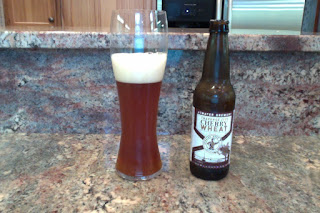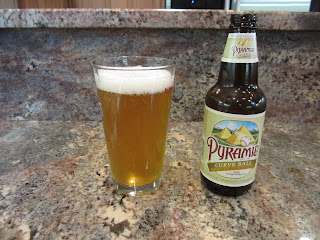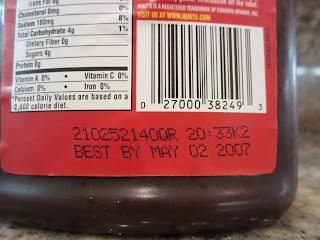 |
| Graphic designers may want to shield their eyes. |
Okay, first off, what’s with the water level Super Nintendo Donkey Kong? Is he throwing a glass of beer at me? Why is it in a different font than the rest of the bottle? Green eyes. Black finger and toe nails. Three tag lines? What is this Monty Python’s “Penultimate Supper?” You can’t see it in this picture, but the top right corner holds the words “ylnevaeh spoh.” Sounds Russian, right? Nope. Spoiler Alert, it’s heavenly hops backwards. Surely people who think this label is good can have no taste of beer, right? Wrong. This hokey cover delivers Lilja’s Sasquatch Stout, which is actually quite good.
 |
| Small head, perhaps from the high ABV. |
Talk about a dark beer. You have to work pretty hard to find the red tones on the edges of every stout’s glass. Turning, raising, searching. The aroma is really smooth and inviting even though the imagery that comes to my mind is over-ripe fruit and wet fur. Kind of like how haggis smells and tastes like dog food yet still manages to be quite good. It only takes a second to place this stout in the coffee camp, but it’s not being served black. That smoothness from the aroma returns to build a milk stout mouthfeel even though this bigfoot has no lactose added. Overall, very satisfying and much better than the odd label leads you to believe.
After taking a look at their website, I have to say that label isn’t really all that surprising. The page for Lilja’s Sasquatch Stout is home to four whole well-written paragraphs about sasquatch, tying it back to the beer only by insinuating a six pack of the stuff will keep you safe from a six foot tall, four hundred pound hominid. The ingredients list claims to use a hop variety that is also a class of primate. No problem, I can google "simian hops" and find out what they are, right?
| Or maybe not... |
Not to worry though, it wraps up with a picture of a transgender bovine with spots shaped like the continents. I don’t know if they’re rich enough to be called eccentric or if they just fall into the crazy category but whatever they are, their beer is delicious!






























